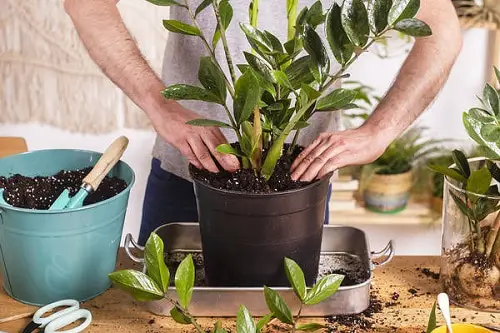Read about the common Mistakes to Avoid When Repotting Houseplants by following the simple rules recommended in the given article.
If you want to know all the secrets about transferring your old plants to a new container then have a look at these top Mistakes to Avoid When Repotting Houseplants.
Here is all you need to know about repotting indoor plants correctly
When to Re-Pot the Houseplants?

Before you decide to re-pot any plant, look for the following signs so you can determine whether it’s time to repot your plants or not. Re-pot when:
- You notice slow growth even in the growing season.
- Roots forming a huge, tangled mass.
- Roots are spilling out from the bottom of the container.
- The plant dries out fast and needs more watering.
- The pot isn’t supporting the plant.
- Water comes rapidly from the bottom holes – it happens when there is less soil to catch the moisture and more roots.
- If you find salt buildup on the top of the soil.
Mistakes to Avoid When Repotting Houseplants
Mistake 1: Inappropriate Pot Size
The size of the pot is the most important thing in the entire process of repotting. Always go for one size bigger pot than the previous one. This will provide sufficient space for the roots to grow, and the soil will not become waterlogged for many days after watering.
Mistake 2: Ignoring the Importance of Drainage
While repotting, drainage also plays an important role in the well-being of the newly repotted plant. Also, do not go with the idea of adding gravels on the bottom as it raises the wet zone in the soil and can lead to root rot due to a shortage of oxygen.
For good drainage, it’s necessary that a pot must have enough drainage holes. In case you are using a decorative pot without drainage holes, you can drill a few at the bottom.
Mistake 3: Breaking the Rootball Completely
Instead of breaking the entire root ball, loosen it gently with fingers. If the roots are very tight and deeply tangled, soak the root ball in water for a few hours or overnight – it will make the task easier for you.
If the roots are tightly clumped together and have taken a coiled shape, you can trim the excess using a sanitized shear.
Mistake 4: Wrong Selection of Soil
It is necessary to use the type of soil according to the species of the plant. For example, if you are growing dracaena, yucca, or rubber tree, then use coarse soil with large particles like lava rock or perlite of about 1/4 inches in size. This will give good drainage and root development.
For plants like begonias, African violets, and other small plants, use potting mix made up of vermiculite, sphagnum peat moss, and perlite will be the best.
Mistake 5: Re-Potting in Cold Weather
If you live in a cold climate, then avoid re-potting your plants in winters as the plant might get a transplant shock, which may ultimately result in their death. Wait till summer or spring to re-pot them.
If you live in a warm climate, you can re-pot the plant anytime when you see the need for it.
Mistake 6: Re-Potting a Flowering Plant
Houseplants flower when the conditions are just right and re-potting them during that time will completely abandon the flowering.
Mistake 7: Not Every Plant Needs Re-Potting
Plants like the Bird of Paradise and Peace Lily do surprisingly well when they are slightly rootbound and use their energy to grow flowers instead of growing roots.
Mistake 8: Avoid Re-Potting a Big Plant
If the plant is growing well and if it’s big and happy, then there’s no point re-potting it. It will also be too heavy to lift off the plant from an old pot and you’ll ultimately damage it in the process. Simply scrape away the top one inch of soil and replace it with fresh compost.
The Bottom Line

Only re-pot the old plants when you see the roots coming out of the pot or if you want to shift the plant into a different or colorful container. While repotting, be gentle and careful when moving the plant in a new container. Handle the rootball carefully and makes sure you don’t end up damaging it.
After repotting, it is crucial to give the plant sufficient watering and locate it in filtered light, away from direct sunlight for the first few weeks.


